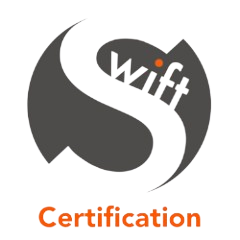Why ISO 27001:2022 is More Critical Than Ever
With cyber threats growing more sophisticated and regulatory pressures intensifying, the need for a resilient Information Security Management System (ISMS) has never been greater. The latest revision, ISO/IEC 27001:2022, reflects modern security realities and best practices, requiring organisations to transition from earlier versions (namely ISO 27001:2013) by the deadline of 31st October 2025 to maintain certification and compliance. Failing to do so risks not only regulatory repercussions but also missed opportunities for improved security and business credibility.
For IT Managers, Chief Information Security Officers, Compliance Officers, and business leaders willing to keep ISO 27001 logo on their company documents, upgrading is both a necessity and a strategic advantage. It strengthens your ability to protect sensitive data, demonstrates robust risk management to partners and clients, and helps position your enterprise competitively in bids and tenders. The time to act is now—proactive transition ensures you stay ahead of threats and seamlessly meet evolving expectations.
Key Changes: What’s New and Different in ISO 27001:2022?
The latest update introduces several structural and practical enhancements:
- Controls Consolidated and Revamped: The number of Annex A controls has been reduced from 114 to 93, with clearer grouping into four main domains: Organisational, People, Physical, and Technological, replacing the previous 14 domains.
- Introduction of 11 New to ISO 27001 Controls list:
- A.5.7 – Threat Intelligence
- A.5.23 – Information Security for Use of Cloud Services
- A.5.30 – ICT Readiness for Business Continuity
- A.7.4 – Physical Security Monitoring
- A.8.9 – Configuration Management
- A.8.10 – Information Deletion
- A.8.11 – Data Masking
- A.8.12 – Data Leakage Prevention
- A.8.16 – Monitoring Activities
- A.8.23 – Web Filtering
- A.8.28 – Secure Coding
These new controls address emerging risks, notably from cloud services, advanced threat landscapes, and stricter data governance expectations. Existing controls have been streamlined, merged, or updated to clarify requirements, and the whole framework is more closely aligned with everyday operational and technological environments.
- Attributes for Controls: The update introduces five attributes (control type, security property, cybersecurity concept, operational capability, and security domain) to help organisations map controls to their own risk context and business priorities.
Your Step-by-Step Transition Roadmap: A Practical ISO 27001 Guide
Transitioning effectively to ISO 27001:2022 means following a structured and practical plan:
- Understand the Changes: Thoroughly review the revised standard and Annex A to know what’s new and what’s changed for your organisation. Training and webinars on ISO 27001:2022 are widely available and highly recommended.
- Conduct a Gap Analysis: Compare your current ISMS processes and documentation against the new standard, focusing particularly on the 11 new controls and merged requirements.
- Develop an Action Plan: Assign clear responsibilities, update documentation and procedures, and ensure all necessary technological and organisational changes are scheduled well before the October 2025 deadline.
- Employee Awareness & Training: Engage staff at all levels, especially those responsible for information security. Provide updated training to reflect the new controls, risk assessment methods, and operational changes.
- Update Risk Assessments: Re-evaluate your risk model to ensure emerging threats and new controls are incorporated. Modern risk platforms and configurable gap analysis tools can speed up this process.
- Implementation: Systematically roll out updated controls, policies, and technical measures. Track completion and effectiveness regularly—don’t leave any element behind.
- Internal Audit: Perform a thorough internal audit against the new requirements, addressing any non-conformities before formal review.
- External Audit & Certification: Schedule your transition audit with your chosen certification body, allowing extra time for assessment, especially as the deadline approaches.
- Continuous Improvement: Establish mechanisms for ongoing monitoring and review of ISMS effectiveness to stay compliant and adapt to future changes.
Overcoming Common Transition Challenges
Transitioning to ISO 27001:2022 is not without hurdles. Typical challenges include:
- Resource Constraints: Tight budgets and limited time can hinder progress. Solution: Prioritise tasks, phase implementation, and leverage digital tools or consultancy support to spread workload effectively.
- Complex Documentation: Interpreting and aligning new requirements can be daunting. Solution: Use gap analysis software and transition checklists. Many certification bodies offer free or affordable transition tools.
- Resistance to Change: Teams may see the update as unnecessary. Solution: Communicate benefits clearly—enhanced protection, easier compliance, and competitive advantage.
- Audit Timing: Scheduling a transition audit close to the deadline can be risky if issues arise. Solution: Book audits well in advance and conduct practice internal audits to ensure readiness.
Conclusion: Secure Your Future with ISO 27001:2022
Transitioning to ISO 27001:2022 isn’t just a compliance exercise—it’s a decisive move towards future-proofing your organisation. By meeting the October 2025 deadline, you safeguard your reputation, reinforce your data security defences, and unlock market opportunities. You also demonstrate to stakeholders and clients that your business takes information security seriously in an increasingly volatile digital landscape.
Take Action Today!
Explore our ISO 27001 certification services to ensure compliance and business continuity by October 2025:




